Table of Contents
Viral marketing has existed for decades, but it has become especially popular with the rise of social networking.
Social media provides a platform for anyone to share content, and marketers capitalize on this by creating entertaining, shareable material that promotes their brand. The goal of viral marketing is for existing customers to convert new customers by sharing the brand’s content.
Many people believe that there is an element of randomness to viral content. While some videos may go viral by chance, almost all successful viral marketing campaigns involve a strategy to reach a broad audience. You can never be sure that your content will go viral, but you can employ several strategies to increase the odds.
If you’re trying to expand your customer base, a viral marketing campaign may be a worthwhile venture. Before you start your campaign, you should understand what viral marketing is, why it works, and how to make something go viral.
What Is Viral Marketing?
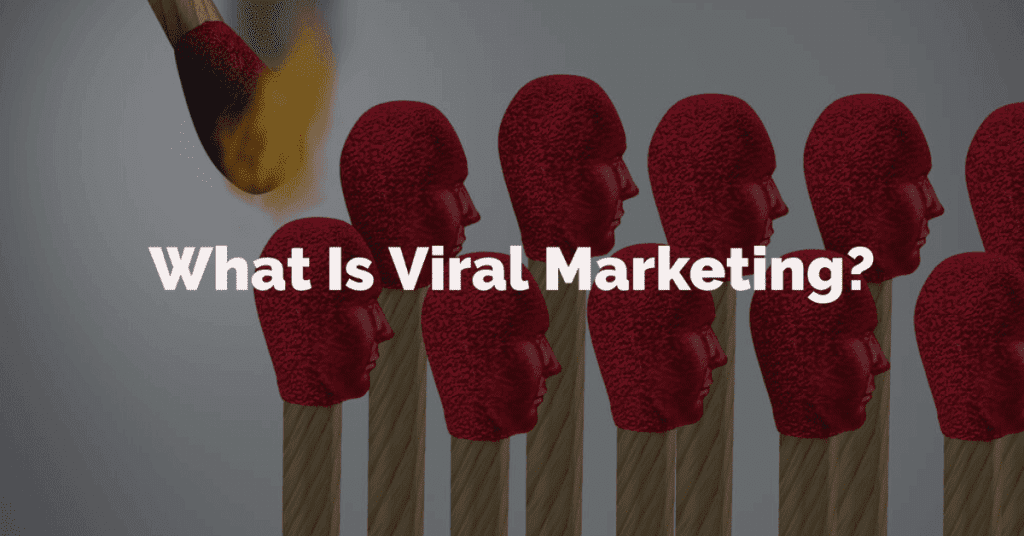
Viral marketing is a form of marketing where others share your product or service for you. With traditional marketing, you are usually the entity promoting your brand. With viral marketing, your brand gains so much momentum that the customers play a role in promotion.
If each customer converts multiple new customers, and those new customers continue to share your brand, you can achieve exponential growth. Viral marketing campaigns can quickly become massive.
Unfortunately, most brands have a low chance of going viral based on their product or service alone. Customers rarely feel passionate enough about a brand to share it with friends. The purpose of a virtual marketing campaign is to create a piece of content that resonates so much with an audience that they feel compelled to share it.
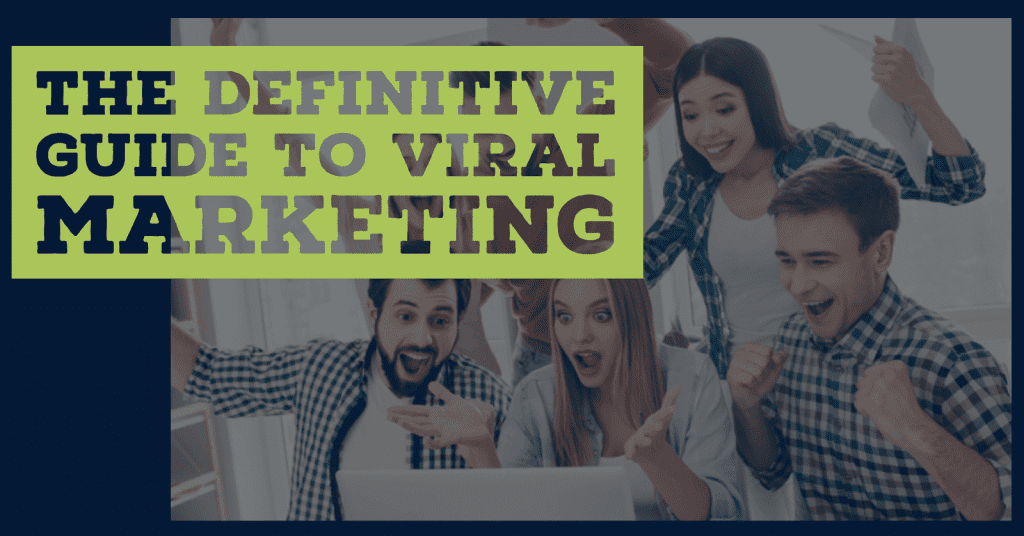
Successful viral marketing leads to a dramatic increase in engagement and brand recognition. Ultimately, this increases sales.
Everyone wants their brand to go viral, but there is not a guaranteed formula for success. However, if you take the right approach, you can increase your chances of creating a great viral advertising campaign.
Types of Virality
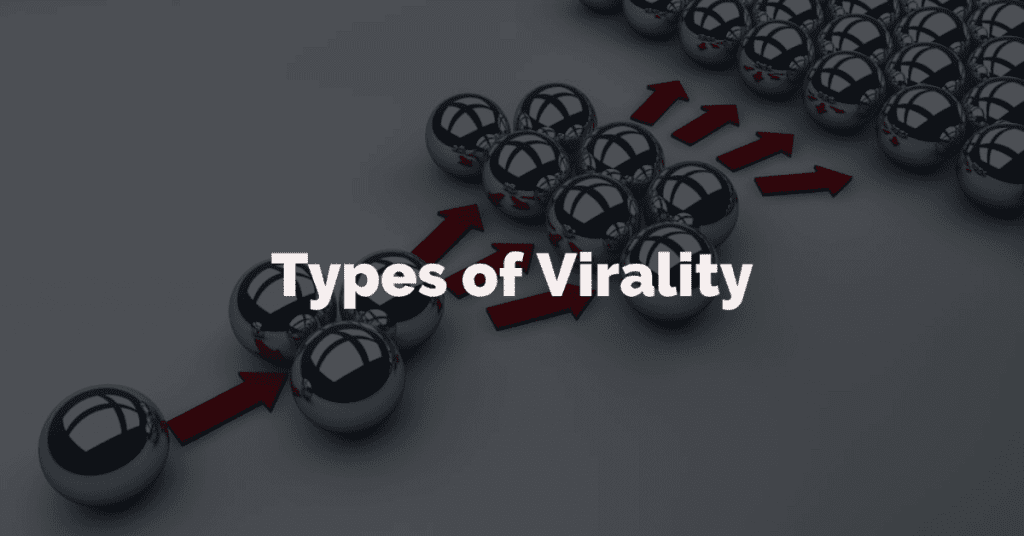
Campaigns go viral for several different reasons. If you can identify which type of virality you want to achieve, you can narrow down your focus. Entrepreneur Uzi Shmilovici outlines eight kinds of viral marketing campaigns:
Inherent virality: Customers only get value from the product if other people use it, too. They must share the content to benefit from it.
Collaboration virality: Customers can benefit from using the product on their own, but they get more value from using it alongside others.
Communication virality: Customers use the product to communicate with others. The communication itself spreads the message about the product.
Incentivized virality: Customers earn cash, free products, or other benefits by referring to other customers.
Embeddable virality: Customers can embed a brand’s content on their websites or social media platforms with a link back to the original site.
Signature virality: Customers can embed the product or content on their site, and a “powered by” signature appears at the bottom. Potential customers who are interested in the product can click on the signature to redirect to the original site.
Social virality: Customers sign up for the product or service using an existing social media account. Their friends and followers can see that they are using the product or service, which generates interest.
Word-of-mouth virality: Customers tell others about the brand simply because they enjoyed it. Even if they do not benefit from sharing the word, they are happy to let their friends know about their excellent experience with the product or service.
Qualities of a Viral Marketing Campaign
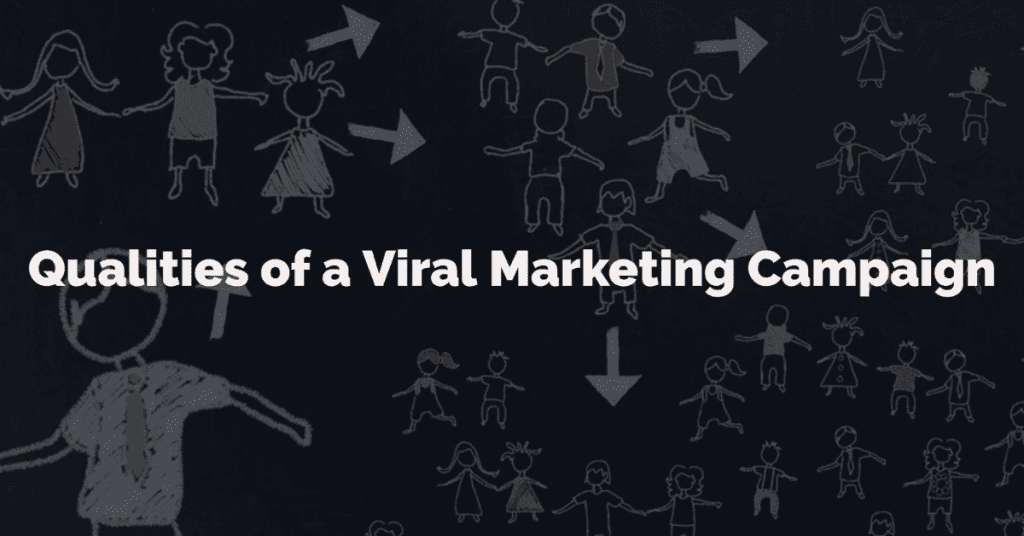
Although there are different formats and styles of viral marketing campaigns, most have some shared qualities. Observing the similarities between viral campaigns can help you figure out how to go viral. Here are five qualities you should strive for in your viral content:
1. Visual
Almost all viral marketing campaigns have a visual component. In most industries, it is challenging to generate enough interest in a brand for it to go viral without something visual. Images and videos are entertaining, descriptive, and informative.
2. Creative
Viral marketing campaigns need a unique and creative element to be successful. The reason a viral ad gains so much traction is because no one has seen anything like it before. Creativity can come from the storytelling, the humor, the visuals, or any other element of the content.
3. Emotional
Most viral ads either appeal to humor or emotion. Both make the audience feel something, which is critical in viral marketing. Viral content works best when it appeals to positive emotions like hope, nostalgia, and excitement. Occasionally, viral content will tap into strong negative emotions like anger or disgust. When someone makes an emotional connection with the content, they will feel more inclined to share it. Also, consumers are more likely to remember and recall brands whose ads caused an emotional reaction.
4. Shareable
The best, most creative advertising campaign will not go viral if it is not easy to share. Most people have a short attention span, and if they do not see an option to share your content within a few seconds, they will move on. Successful viral ads are easy to share, download, or embed. The opportunity to do so should be visible and noticeable so that the audience does not have to figure it out themselves.
5. Targeted
A high-quality virtual marketing campaign has a specific target audience in mind. It is exceedingly rare for a piece of content to resonate with everyone, and trying to please everyone can result in pleasing no one. The best campaigns start by determining the target audience. Then, every action the marketer takes is to connect with this group.
The Math Behind Viral Marketing
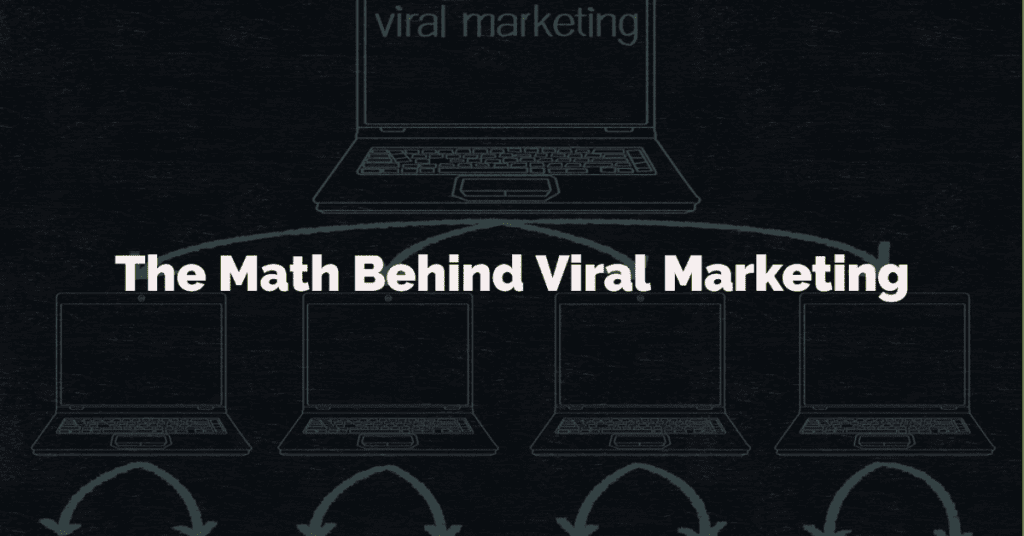
You can measure the success of a viral marketing campaign mathematically. Content goes viral as people share the news, and this growth happens exponentially. The best way to measure your viral campaign is with the viral coefficient.
The viral coefficient is the number of customers each current customer successfully converts. You can calculate this in three steps:
1. Multiply the number of your current customers by the number of shares or invites these current customers send out.
2. Multiply this amount by the percentage of invitees who become new customers.
3. Divide this number by the number of original customers.
For example, you may start with 50 customers who each share your content five times, and 40 percent of these shares result in a conversion. Multiply 50 by five to get 250. Then, multiply 250 by 0.40 to reach 100. Divide 100 by the original 50 customers to get a viral coefficient of 2. This means that, on average, each customer will bring in two new customers.
Ideally, your viral coefficient should be more than 1 to result in exponential growth of the viral marketing campaign.
Viral Marketing Examples
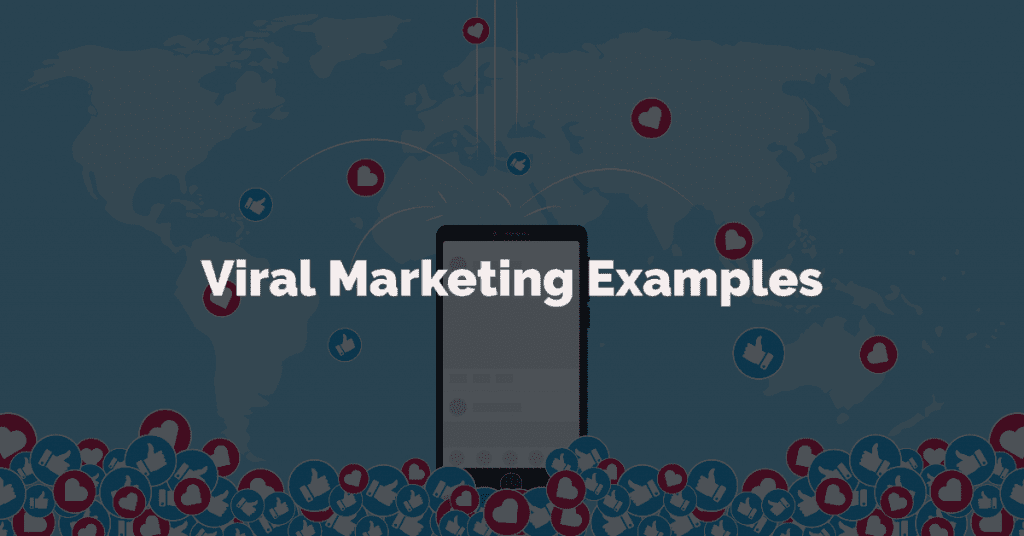
Studying successful viral marketing campaigns is a great way to learn how to make something go viral. Here are six of the best viral marketing examples:
1. Dollar Shave Club
Dollar Shave Club is a subscription-based company that mails razor blades to its members once per month. In 2011, a monthly subscription box was a new concept. Not only did Dollar Shave Club have to promote their brand, but they also had to explain how their product worked.
They accomplished this in a wildly successful video that now has over 26 million views on YouTube. The video is funny and informative, and it went viral within a few days. The brand took a risk by using some irreverent humor, but the video is memorable and appeals perfectly to its target audience. Dollar Shave Club spent only $4,500 on the video, but the brand awareness they built from this campaign is priceless.
2. Dove Real Beauty Sketches
Dove’s Real Beauty campaign is an excellent example of content that appeals to emotion. In the video, a forensic sketch artist draws two versions of the same woman. One is based on her description of herself, and the other is based on someone else’s story of her. The video sends a powerful message about self-perception and self-confidence, which has been a significant trend in recent years.
This campaign is unusual because the content of the video has nothing to do with Dove or its products. However, Dove is a famous enough brand that they do not have to teach people who they are. Instead, the purpose of the campaign is for the audience to associate the heartwarming feeling evoked by the video with Dove, which makes them more likely to buy Dove products.
3. Hotmail
In the early days of the internet, Hotmail was the most popular email provider. The service proliferated because the signature line of every email included the statement, “PS: I love you. Get your free email at Hotmail.” This line was hyperlinked to Hotmail’s website.
This simple referral strategy is eye-catching and intriguing. Every time a Hotmail user sent an email, they promoted the service. The campaign cost virtually no money, but it played a significant role in Hotmail’s early success.
4. Farmville
Farmville was a viral Facebook game that exploded in popularity around 2010. The game encouraged players to invite new users by offering rewards for bringing them into the Farmville universe. The game would also generate posts on players’ Facebook pages for their friends to see.
For a couple of years, Farmville was inescapable on Facebook. Their page still has more than 30 million likes. It was easy and rewarding for players to promote the game, so millions of people joined in.
5. ALS Ice Bucket Challenge
The ALS Ice Bucket Challenge began in the summer of 2014 to raise money for research into ALS. The challenge involved pouring ice water over your body and nominating friends to follow suit. In just a few months, the Ice Bucket Challenge raised $115 million.
People enjoyed watching their friends complete the challenge and were excited to join in the trend. Celebrities started participating, which further publicized the movement. The sense of community compelled people to join in and promote the challenge, so it became one of the biggest trends of the year.
6. IHOP
In 2018, IHOP tweeted that they were changing their name to IHOb. The tweet immediately went viral as people speculated about what the “b” stood for. For the next week, IHOP teased its audience on Twitter and their other social media platforms about the name change until they revealed that the “b” stood for burgers.
IHOP’s marketing campaign was a viral success because it was simple, funny, and easy to share. By not revealing what the “b” stood for, they left plenty of space for people to reply with their guesses. Every time someone gave their input, they promoted IHOP. The restaurant saw a steep increase in their burger sales after the campaign.
How and Why Content Goes Viral
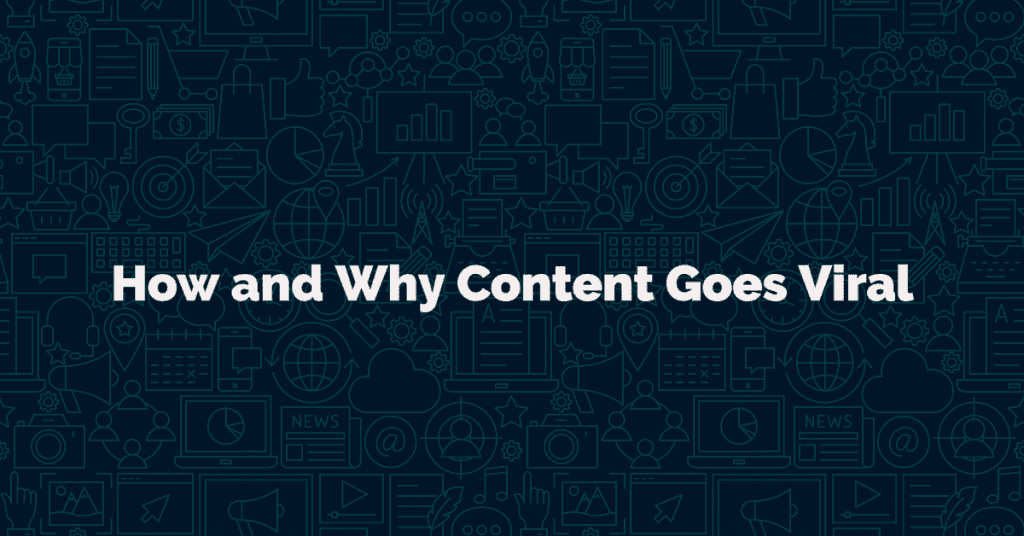
Content goes viral when it has the right qualities for virality and when it gets enough attention. There are two main channels for viral marketing content: social media and mainstream media coverage.
Viral ads most commonly begin on social media because it’s straightforward for the audience to share the content on their platforms. Then, as it starts to build momentum, it may get picked up by the mainstream media. This surge further publicizes the material, which leads to even more social media sharing. If the campaign continues to grow, more publishers may share it as well. Sometimes, campaigns go through multiple waves of virality as they cycle through social media and mainstream publicity.
Benefits of Viral Marketing
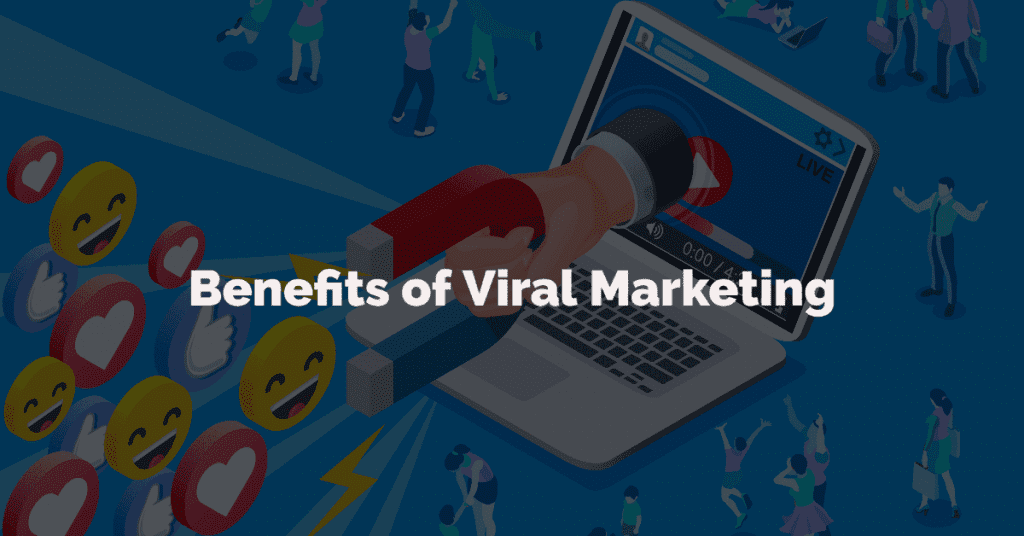
There is never a guarantee that your marketing campaign will go viral, so some marketers wonder if it is worth it to try. A successful viral advertising campaign can benefit your business in several ways, though. Here are six advantages of viral marketing:
Brand Recognition and Credibility
Not everyone who views your viral content will become a customer right away. However, a successful campaign will significantly increase brand recognition for your business. People are highly likely to remember brands that went viral if the content evoked strong emotion. Even when months or years go by after the campaign, people may remember your ad when they need your product or service.
More recognition also leads to more credibility. Brands don’t become popular unless the customers like the product or service, so people tend to trust businesses that have a more extensive customer base.
Increased Traffic
Successful viral marketing usually leads to a spike in traffic to your site.
To facilitate this, link your website in the content. Potential customers may also find their way to your site by Googling your brand after seeing the ad.
The viral marketing campaign can be your first step toward converting customers if it draws people to your website. Once they visit your site, you have the opportunity to use other marketing strategies to encourage them to make a purchase.
Mainstream Media Attention
Mainstream media coverage is a great way to expand your reach. Some people engage more with mainstream media than they do with social media or other channels, so getting a high-authority publisher to share your content can help you access an entirely new audience.
Mainstream media exposure builds your credibility, as well. Most people view mainstream publishers as highly trustworthy sources. If a mainstream media platform takes the time to share your content, potential customers will know that it’s worth their time, too.
Inexpensive
Compared to the costs of other forms of marketing, viral advertising is exceptionally inexpensive. All you have to do is pay for the original content and the first wave of promotion. If the ad goes viral as intended, your customers will continue the advancement on their own.
The priority for viral marketing is creativity, which does not require high-quality equipment or a massive budget. Videos filmed on an iPhone can go viral if the content is unique and engaging. Even if your attempt at a viral ad does not gain as much momentum as you had hoped, it will not be a significant loss.
Fast
Very few marketing strategies achieve results as quickly as viral advertising. Most marketing campaigns take months or years of work before the payoff, but viral marketing has the potential to make your brand famous overnight. This level of immediate success does not happen to every campaign, but even a small amount of momentum is valuable.
How to Go Viral
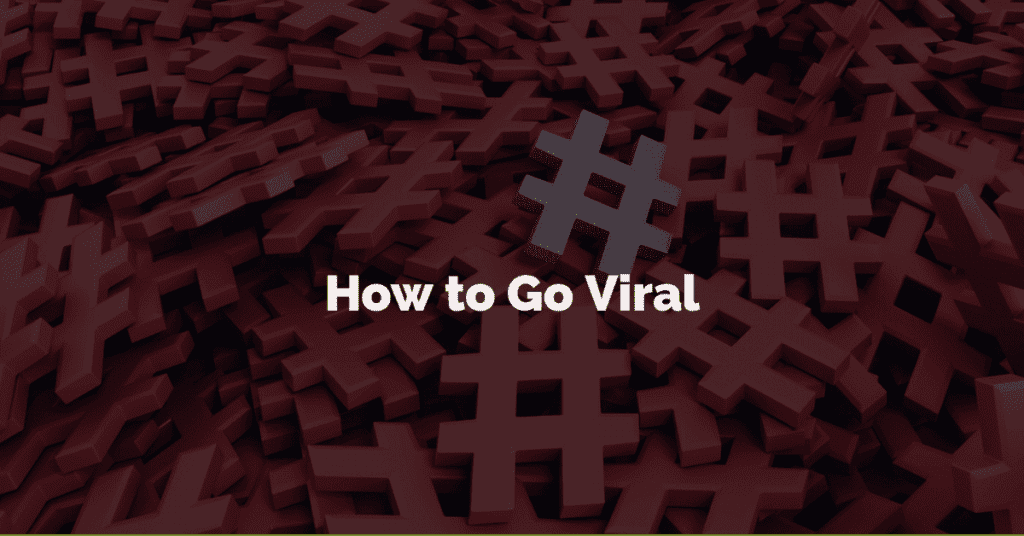
While a viral marketing campaign may be more straightforward and less expensive than other marketing strategies, it still takes careful planning and preparation. Content rarely goes viral at random. Successful marketers design viral campaigns to reach a broad audience. To compete with the massive amount of content on the internet, you must strategize every step of the way.
Target Audience
Before you can start working on your campaign, you must know your target demographic. Explicitly designed content for your avatars is much more likely to receive attention than content that is vague or overgeneralized.
Consider the age, location, gender, occupation, and income of your customer base.
· What do they look for in a brand?
· What stories or topics will they relate to the best?
· Why do your current customers patronize your business?
Determine your ideal audience and the reaction you want them to have when they view your content. Always keep your target demographic in mind as you plan your campaign.
Type of Campaign
Once you understand your audience, you can start to develop the structure of the campaign. There are many types of viral marketing strategies. Some, like viral videos, appeals to emotion, or humor to encourage people to share. With these campaigns, the audience doesn’t directly benefit from sharing the content, but they want to because they enjoyed it so much or because they believe others must see the content as well.
According to a New York Times survey, these are the main reasons people choose to share stories online:
- Define themselves to others
- Feel connected with others
- Promote topics they care about
- Share content that will help others
- Feel involved in the world
If you can craft a video or story that appeals to emotion and fulfills one of these needs for your audience, you have a good chance of going viral.
Other viral campaigns offer an incentive to share the content. You may submit a discount for referring a new customer or a reward for posting about your brand on social media. Sweepstakes, raffles, and giveaways attract a broad audience, too. These types of campaigns tend to be more dependable than appeal-to-emotion drives because there is a definite, concrete motivator for the audience.
Quizzes are another valid viral marketing format. They are highly interactive, which increases engagement, and they provide meaningful feedback to your audience. Quizzes are also highly shareable. People like to share their results on their social media pages and compare themselves with their friends’ results.
Topic
If you plan to create a content-based campaign, it is crucial to choose your topic wisely. It should be popular enough that the content gains traction but unique enough that the audience finds it interesting.
Capitalizing on a trending topic can be a great way to create a viral campaign. You can use Google Trends to discover what keywords people have been searching for, which is a good measure of current popular topics. To find material your prospects will find exciting, enter a general term that describes your brand into the Google Trends search box, and read through the list of related topics and related queries.
Your campaign topic should be relatable and exciting for your target audience. When your audience can personally connect to the ideas you present, they are more likely to have a strong emotional reaction to the ad.
Content
Most of the top content on popular social media networks appeal to emotion. A team at Buzzsumo analyzed the most shared content on the web within a specific time frame and labeled each piece of material with a feeling. Then, they broke down the percentage of the content that appealed to each emotion:
- Awe: 25 percent
- Laughter: 17 percent
- Amusement: 15 percent
- Joy: 14 percent
- Empathy: 6 percent
- Anger: 6 percent
- Surprise: 2 percent
- Sadness: 1 percent
- Other: 15 percent
Most viral content appeals to humor or positive emotions. Keep this in mind when deciding how you will tell your story or share your message. If you can present your topic in a way that appeals to one of these popular emotions, you can increase your chances of going viral.
However, viral videos that appeal to emotion are not the best option for every business. Instead, focusing on data may be more effective for your brand. If you have data that will interest your potential customers, you can create a video, article, or infographic that your audience can share. A campaign like this may not achieve global virality as a funny video does, but it can successfully circulate your industry.
No matter the content of your campaign, try to avoid being salesy. The drive should relate to your product or brand, but your goal should be to create content that people want to share. Focus on the story, data, or emotion behind the content instead of the sales pitch.
Don’t be afraid to take a stance on your topic. Some topics are non-controversial, but others are more polarizing. Being neutral is safe, but it can also make you forgettable. The best viral marketing campaigns take risks, and being honest with your audience about your stance can be a risky but rewarding act. Consider your audience and remember that you do not have to please anyone who is not in your target demographic.
Format
Viral marketing campaigns take on a variety of formats.
· Videos
· Charts
· Blog posts
· Tweets
· And all other forms of digital communication can go viral.
The ideal format for your campaign depends on your audience and your content.
Videos are the most common type of content to go viral. They are highly emotional and visual, so it is straightforward for the audience to connect with the content. Videos are also more entertaining and engaging than photos or articles. YouTube is an excellent platform for viral growth, too. When a lot of people watch and interact with a YouTube video, the platform starts to recommend it to others.
If your topic is technical or data-driven, an article or blog may be the best format. Text does not appeal to emotion as effectively as video, but it is the best way to communicate in-depth information. Long-form articles are shared more frequently than short-form blog posts. Reading a lengthy report is a more significant commitment, but detailed posts establish credibility and build trust in your brand. It also provides more opportunities for people to respond with their insight, which increases sharing.
Charts and infographics are high-quality, easily shareable resources to convey data. If a long-form article is not the right option for your content, translating the data into a visual format can be a great way to get attention within your industry.
SEO
Search engine optimization can play an essential role in viral marketing. The primary way to build momentum for your viral marketing campaign is to share the content directly with your audience. However, SEO helps your audience discover your content through search engines.
SEO is a vital part of any digital marketing strategy. Search engines are responsible for 300 percent more website traffic than links from social media platforms. People continuously use search engines to look for brands, products, and information. SEO helps you target people who are already interested in and searching for content in your field.
Using keywords in your viral content can increase your campaign’s reach by boosting its search engine rankings. You can conduct keyword research with the Google AdWords Keywords Planner. Enter a broad keyword related to your brand or industry into the planner and select the “get ideas” option. Doing this will give you a list of related keywords, as well as the average monthly search volume and level of competition for each keyword.
Choose one of these keywords to target in your viral ad, and try to use it naturally in the title, meta tags, or other written content. If you intend your campaign for people in a specific location, include location-based keywords in the content as well.
Viral Marketing Tools
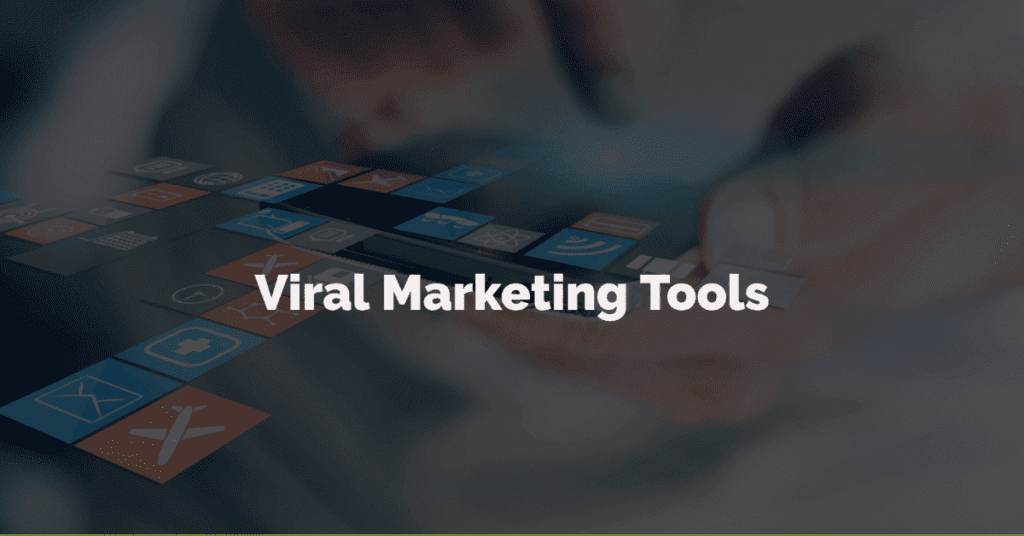
You do not have to develop a viral marketing campaign all on your own. If you are working on a contest or referral marketing campaign, there are a variety of resources that can simplify the process. Here are some of the best tools that make planning and implementing your campaign easier:
UpViral: This service lets you build a referral link program and a rewards system. Both programs are highly customizable so that you can create the ideal campaign for your brand. UpViral can also help you create contests and sweepstakes, which are effective ways to generate leads. They offer A/B split testing that allows you to measure the success of your campaign.
Interact: This tool helps you create online quizzes for your audience. Quizzes are a fun way to increase engagement and generate interest in your brand. Interact provides analytics and tracking so that you can measure the campaign’s performance. They also employ consultants who can help you write a successful quiz.
KingSumo: This is a contest and giveaway tool that encourages sharing. The more someone shares the contest, the more entries they get into the raffle. The service integrates with WordPress and social media, and you can choose how many entries each person can get per share. KingSumo charges a one-time fee for a lifetime of access to their service, so you can create as many contests as you want.
Gleam: This platform is designed for contests, giveaways, and rewards-based campaigns. It encourages contest entrants to follow your social media platforms, view your content, and subscribe to your email list. Running a contest can be difficult because people may try to cheat, but Gleam verifies the entries to reduce the risk of fraud.
Viral Loops: This is one of the best services for generating referrals. Viral Loops has several different referral templates that offer rewards and discounts for customers who share your brand with their friends. They also provide a leaderboard giveaway program that ranks participants based on their number of referrals. The added element of competition can be a great way to encourage customers to share your brand or your content.
UnTorch: This is an email rewards program that allows you to offer rewards to customers who share your campaign. All you have to do is decide on a reward system and copy and paste the UnTorch widget on your website. UnTorch charges a one-time fee for a year-long campaign, but they also offer a free trial.
Wishpond: Wishpond offers several types of social media contests, including sweepstakes, caption contests, coupon promotions, and photo contests. The games that involve content creation are especially useful because participants are likely to share what they made on their social media platforms. You can only access Wishpond’s contest tool by purchasing one of their packages, but the packages contain other helpful services.
How to Promote a Viral Campaign
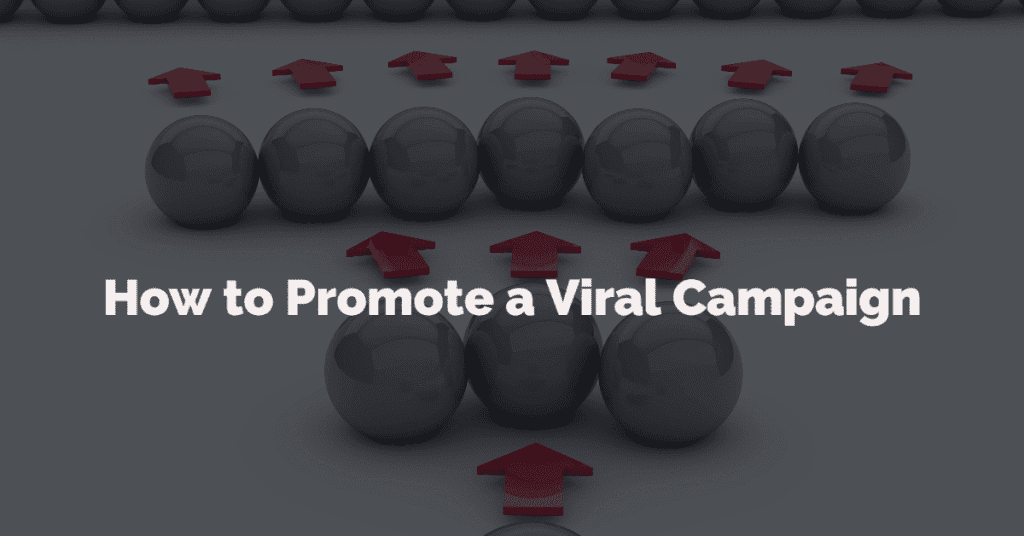
The goal of viral marketing is for your audience to share your content for you. The first round of promotion is up to you, though. At the start of your viral campaign, you should promote the content to everyone you possibly can. Once it reaches the right people, you can pull back on your promotional efforts.
Here are some of the best ways to promote your viral campaign:
Encourage Sharing
Your audience may not think to share the content without a reminder. Do not push too hard for customers to share your campaign, but remind them that they can share the content if they enjoyed it. A brief call-to-action at the end of a video or blog post may be all that you need to go viral.
Email marketing allows you to reach your existing customers and a new audience. You can send your campaign to your email list to connect with those who are already familiar with your brand. Include a link for your customers to share the content with others.
You can also email your campaign to people in your industry who may be interested in publicizing it. Send a personalized but short message explaining the purpose of the content and why they will enjoy it.
Media Coverage
Getting featured in the mainstream media is difficult but valuable. It establishes your credibility and sends a significant amount of referral traffic to your site.
Create a list of bloggers or columnists who write about your industry. Read their work to familiarize yourself with their style and content. Then, carefully craft a personalized email to each writer. Try to make a connection between your content and something else they have written about recently.
Contacting mainstream media sources is a significant time commitment. You may have to send more than 50 emails before hearing a response. However, you only need one publisher to cover your campaign for it to take off. Consider working with a PR distributor if you want mainstream media coverage. PR firms usually have existing lists of media sources by location and industry, which will streamline the process.
Social Media
Posting your content directly to your social media channels is the most straightforward way to reach your existing audience. In addition to publishing the content on your platforms, you can promote it in the communities you are targeting. For example, Reddit forums and Facebook groups are both great places to reach potential customers. Do not spam these communities with your campaign, but casually mention to the groups that they may enjoy your content.
Social media influencers can help to promote your campaign as well. Reaching out to influencers requires the same approach as reaching out to mainstream media sources. Make a long list of influencers in your industry and craft personalized emails to each one. Try to make a connection between the influencer’s previous work and your campaign.
Stumbleupon
Stumbleupon’s paid discovery feature is an excellent way to reach your target demographic. The service costs 10 cents per page view, so investing $50 will get you, 500 audience members. Stumbleupon allows you to modify demographics like age, location, and gender so that you can focus exclusively on your target audience.
Because Stumbleupon serves your campaign to the right audience, it’s highly likely that at least a few viewers will enjoy your content enough to share it. This can lead to non-paid visits and shares that can grow exponentially.
Conclusion
A successful viral ad can rapidly expand your audience. Viral advertising is competitive, but campaigns are relatively inexpensive. People are happy to share content if they find it meaningful or if they receive a reward for doing so, and all you have to do is find a topic that resonates with your audience.
Any business in any industry can create viral content. Viral marketing can include videos, articles, infographics, contests, or referral programs. The key to a successful campaign is using the right format and structure for your industry and your customers. If you create something meaningful, valuable, and easy to share, your audience will promote your brand for you.